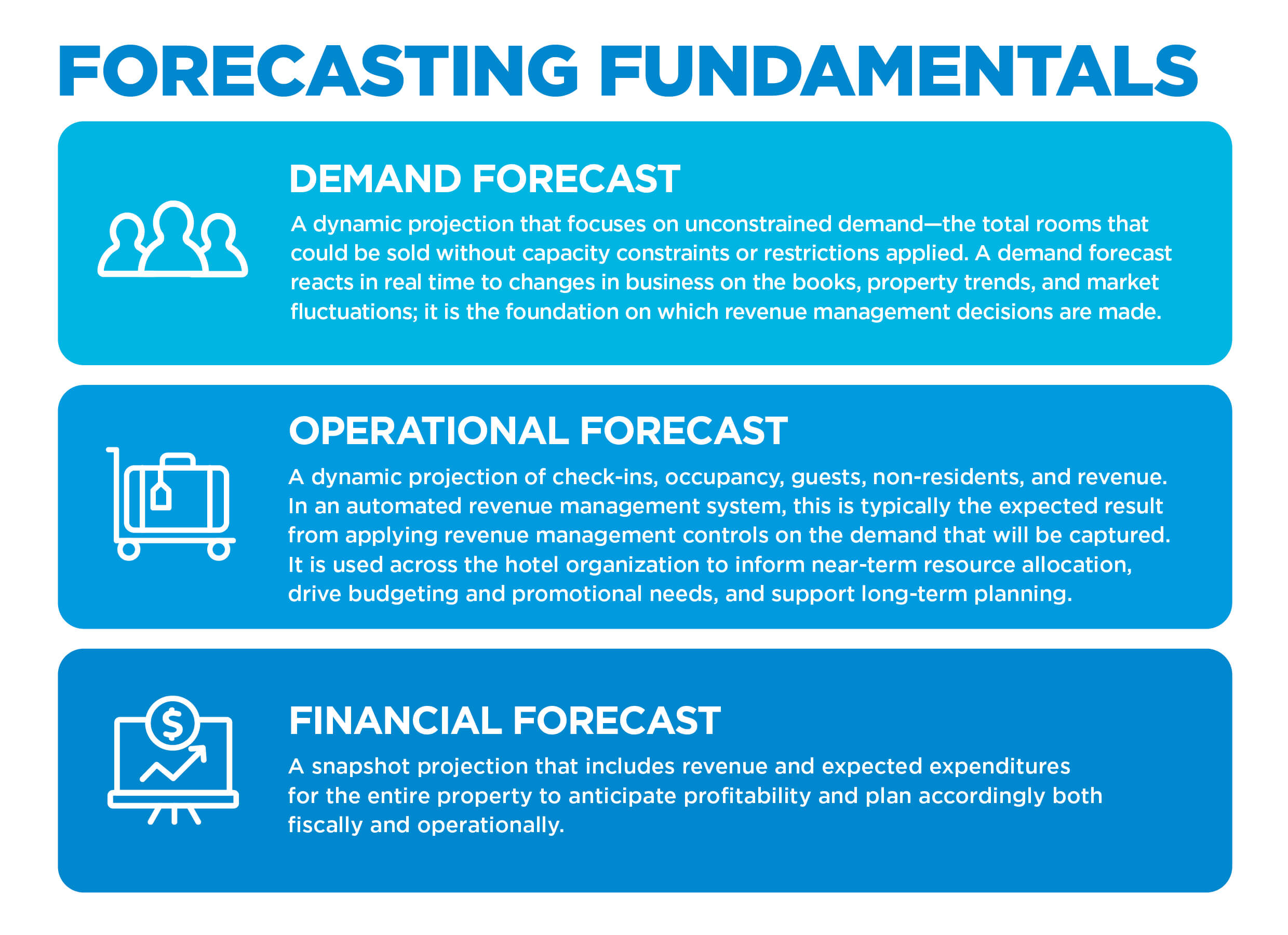Navigating the crossroads of hotel forecasting on the expressway to greater profitability.
How’s that forecast coming along?
It’s an age-old question in the hotel business, born of the need for regular updates on revenue projections and our tendency to procrastinate.
And yet in today’s volatile market, consistent, accurate forecasts have never been more important or accessible. Advances in methodology, tools, integration and automation are making forecasting more efficient, comprehensive and precise than ever.
Much as the industry is evolving from rooms-only revenue management to total revenue management, a similar trend is happening with forecasting.
Total revenue forecasting—informed by your operational and demand forecasts—involves leveraging scientific methods to project performance for all revenue streams. When married with your financial forecast, which adds projected expenditures, a hotel can develop a profit-focused strategy based on a data-driven reality.
With so much on the line, it’s mission critical a hotel stay sharp with their forecasting fundamentals. Knowledge is power, after all, so let’s take it back to the schoolhouse.
Demand Forecast Drive
The demand forecast focuses on unconstrained demand—the number of rooms the hotel could sell per night if inventory was unlimited.
Prepared by the revenue manager, it’s used primarily as a tool for marketing, sales and revenue management, guiding strategies and tactics in pricing, promotions, distribution and segment mix. By anticipating ups and downs in business flows, hotels can proactively boost occupancy in periods of low demand and maximize revenue in periods of high demand.
With the help of revenue science and technology, demand forecasts have become highly sophisticated in recent years, taking into account historical data, segmentation, market conditions, competitor activity and other factors.
Operational Forecast Avenue
Unlike the demand forecast, which focuses on rooms revenue and unconstrained demand, the operational forecast encompasses all revenue streams and is based on constrained demand, or the maximum inventory available.
Depending on the property, other revenue streams may include catering, restaurants, bars, room service and minibar as well as ancillary revenues such as retail, spa, recreation and parking.
Non-rooms revenue is often neglected in forecasting, leaving unrealized opportunities to save costs and generate incremental revenue. The operational forecast allows department heads across the hotel to plan for precise staffing, purchasing, resource and promotional needs. This creates greater accountability and drives higher profitability.
For example, a hotel may be forecasting full occupancy during an upcoming conference, but if meals and activities take place offsite, outlet revenue will be unusually low. An operational forecast will act as a distress signal to managers to reduce staffing and expenses and conceive promotions to attract local, non-guest business.
With their knowledge of room demand and market conditions, revenue managers are well positioned to produce accurate operational forecasts. However, for a complete picture of the business, the revenue manager must work in tandem with other departments like food & beverage and sales & marketing.
At the enterprise level, the operational forecast provides management companies, owners and asset managers with snapshots of revenue performance by property, region, cluster or entire portfolio. The intelligence can be used to guide strategic and tactical decisions and ensure optimal resource allocation, driving better performance across the group.
Financial Forecast Terrace
The final piece of the puzzle is the financial forecast. Here the financial controller takes revenue data, adds expected expenditures and forecasts performance for the entire property. The report is used by executive staff, corporate and ownership to build profit and loss for each business unit.
To take full advantage of the benefits of total revenue forecasting, hoteliers need to move away from quick-fix tactics and guesswork and leverage the science and best practices developed over decades of revenue management.
Also required are automated processes and reporting to reduce errors, ensure consistent delivery and free up time for analysis and strategy. This is particularly important for food & beverage, which involves far more detailed data than rooms. Integration is also critical—the ability to consolidate, standardize and share data from multiple sources, including the PMS, sales & catering, RMS and financial reporting systems.
Whether for a single property or a large hotel group, it’s time to embrace total revenue forecasting. Only then, when asked how that forecast is coming along, will hoteliers be able to confidently answer, “It’s done.”
- Game On – Revenue Management Arrives in the Commercial Arena - November 16, 2020
- Safety, Traveler Confidence, and the Convergence of Hotel Revenue and Commercial Activity - August 12, 2020
- The Hospitality REVolution: All Systems Go! - February 20, 2020

